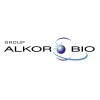AllergoELISA-specific IgE
- FOB Price:Get Latest Price >
- Min.Order:1 Piece(s)
- Payment Terms:L/C , T/T , D/P , PayPal , Small-amount payment , Money Gram , Others
- Favorite
Business Type:Manufacturer
Country/Region:Russia
Ddu Verified
HOT Rank


Alkor Bio, Ltd.
Russia's leading in-vitro diagnostic kits manufacturer
Business Type:Manufacturer
Country/Region:Russia
Ddu Verified
HOT Rank

AllergoELISA-specific IgE (300-29): The new method for quantitative determination of specific IgE – capture-ELISA is implemented in the AllergoELISA-specific IgE kit. The test system contains a die with adsorbed specific to IgE antibodies and liquid biotinylated allergens. These characteristics ensure a high biological accessibility for connection with allergen-specific IgE in a human serum. Moreover it gives flexibility and an ability to format a wide assortment
of allergens to the analysis. Also due to the features of the kit a number of nonspecific reactions with Ig other classes decreases. The obtained results can be presented in ME/ml or classes (from 0 to 5). Any vertical plan-table photometer can be used for the analyses. The design of the kit also gives the ability for the analysis to be made on the automatic EIA-analyzer “Alisey Q.S.”. The kit is available in versions for 96, 192, 480 and 960 tests.
Principle of the assay:
The kit allows quantitative detection of specific IgE in human serum by means of a two-step «capture» assay.
In the first step, samples are incubated with a biotinylated allergen solution in a monoclonal anti-human IgE coated microplate. During this first incubation, the sample IgE antibodies are bound to the solid phase. At the same time, the biotinylated allergen is bound to the sample IgE, specific for that allergen, if present. In order to quantify specific IgE, a calibration curve with known amounts of total IgE antibodies is incubated in the same coated microplate with a biotinylated anti-IgE antibody. The second incubation with the enzyme conjugate (streptavidin-HRP) will be the same for both calibrators and samples. In comparing the sample absorbances with the calibration curve, it is possible to express the sample concentrations of specific IgE in terms of International units of total IgE.
After removing the unbound material by an aspiration/washing cycle, the enzyme conjugate (streptavidin-HRP) is added to the wells, where it binds to the biotinylated allergen.
After a further aspiration/washing cycle, the enzyme activity bound to the solid phase will be directly proportional to the concentration of allergen-specific IgE present in calibrators and samples and evidenced by incubating the wells with a Chromogen solution (Tetramethylbenzidine, TMB) in a Substrate-Buffer. Colorimetric reading will be performed by using a spectrophotometer at 450 and 405 nm.